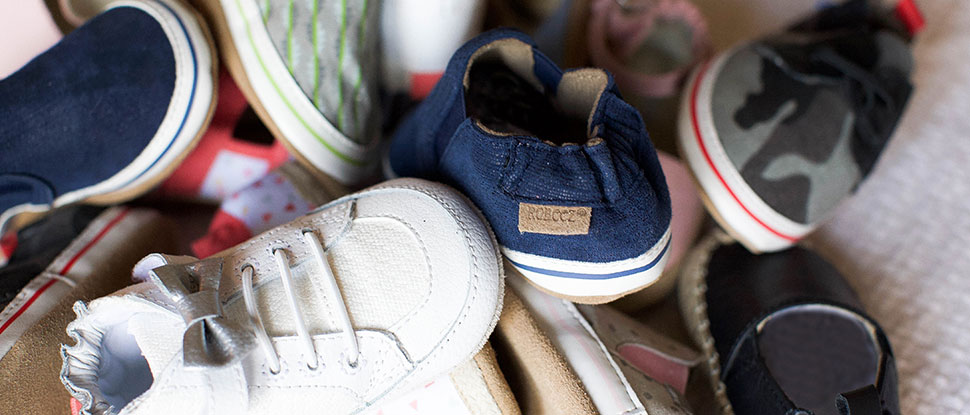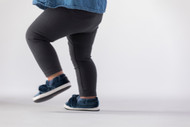How to Teach Baby to Walk
28th Jun 2018

Learning to walk is a bumpy process. At roughly 4-6 months your baby will start to sit up all on their own, beginning a new and exciting adventure that will last well into their first year. In-between there are bound to be triumphs and falls, laughter and tears, and a whole lot fun as you and your baby undertake a transformative process together. Read on to discover our tips and tricks for encouraging your baby to walk through patience, play and praise.
Baby’s Walking Timeline
| 4-6 mo. | Baby will begin to sit up on their own, without additional support |
| 6-10 mo. | Baby will crawl (scooting, belly crawling and on hands and knees) |
| 7-9 mo. | Baby will pull up into standing position using sturdy objects |
| 8-10 mo. | Baby will walk with help from parents and loved ones |
| 8-10 mo. | Baby will cruise using surrounding objects for support |
| 9-12 mo. | Baby will stand alone for increasing lengths of time |
| 10-14 mo. | Baby will take their first steps |
| 12-16 mo. | Baby will walk all on their own |
Sitting Up & Crawling
Around 4 to 6 months of age, your baby will become more confident with supported upright sitting. Continue to use a support pillow as long as your child needs one, but begin to remove it for gradually increasing lengths of time. This encourages their core muscles to strengthen and tone; you can think of yourself as your baby’s first personal trainer! Be sure to outfit them in foot-healthy soft-soled shoes to promote proper foot development as they prepare to walk. To add a little more fun to this stage, create opportunities for upright play by rolling a ball or playing peek-a-boo.
After mastering the sitting posture (around 7-10 months) you’ll find your little one eager to crawl. Express your pride and enthusiasm as they embark on an adventure of independent exploration and remember that there is no one right way to crawl. While hands-and-knees crawling has often been presented as the standard for “proper” mobility at this stage, many babies belly crawl and some even crawl backwards. Promote progress with unconditional praise and affection, and continue to incorporate play that encourages crawling.
Note: The Dangers of Walkers
Many sources present walkers as useful aids for mobility development, but don’t be fooled by this common misconception. Already banned in Canada, walkers constitute a serious danger to children. Studies show that babies tend to walk later and incur more injuries when they use a walker as a developmental aid. Children are particularly at risk for serious medical emergencies when using a walker, and the American Association of Pediatrics currently recommends that walkers be banned in the US. Tossing out your walkers represents the very best thing you can do to support your child on the road to independent walking.
Pulling Up, Aided Walking & Cruising
By 8 to 10 months, your baby will start to let you know they’re ready to stand up on their own two feet, with a little help of course. This step of development begins when your child demonstrates an ability to pull themselves onto their feet using surrounding objects for support. With little leg muscles hard at work learning balance and building strength, there are bound to be some falls and it will be your job to teach them how to fall with grace. Periodically bend their legs and ease your child to the ground to demonstrate safer falling and prevent some of those inevitable bumps and bruises.
Depending on your child’s disposition, aided walking and cruising will likely overlap with the pulling-up phase. Guided walking helps your baby grow their confidence, so set aside some time each day to learn and play together. Encourage cruising by placing baby on their feet in front of the sofa and allow them to explore freely. For your child’s safety, it’s crucial to pad corners and anchor to the wall any furniture that can be pulled over. Watching baby’s development, you’ll notice their growing ease. Follow your parental intuition, and when you feel it appropriate to encourage independent standing, gently remove their hands from their supporting surface.
Independent Standing & First Steps
In the balance and equilibrium stage, your child will begin independent standing which requires patience and compassion as your baby undertakes a challenging point in their development. Extending from 9 to 14 months, your child will grow increasingly accustomed to an erect posture. Make standing a norm by always placing them down on their feet, rather than a sitting position, even if they tend to sit down immediately after. If you haven’t already, now is the time to purchase a pair of safe and cozy soft-soled walking shoes.
Prepare for first steps with lots of cheering and celebration when they stand, and as they become steadier, begin to place distance between you and your child as you beckon them to step forward. Working up the courage to take that first big step might take a while, so don’t fret if your child seems especially hesitant. Remember that every child has a unique developmental trajectory and will walk when they feel ready. No need to rush.
Independent Walking
At anywhere from 12 to 16 months your baby will be up and walking all on their own. Some babies still prefer to crawl or cruise despite being perfectly capable of walking. This preference shouldn’t alarm parents. Continue to place your child down with feet firmly on the ground and stand them up regularly to promote more consistent walking, but allow them to grow out of this phase naturally. Before you know it, you’ll be chasing them as they try to escape bath time.
Remember to take it slow and enjoy the little moments. Take lots of photos as you celebrate your little one’s victories and kiss away their boo-boos. Laugh often and love each other well. This is a special era in your child’s life, and a wonderful time to strengthen the bond between you as they grow.

